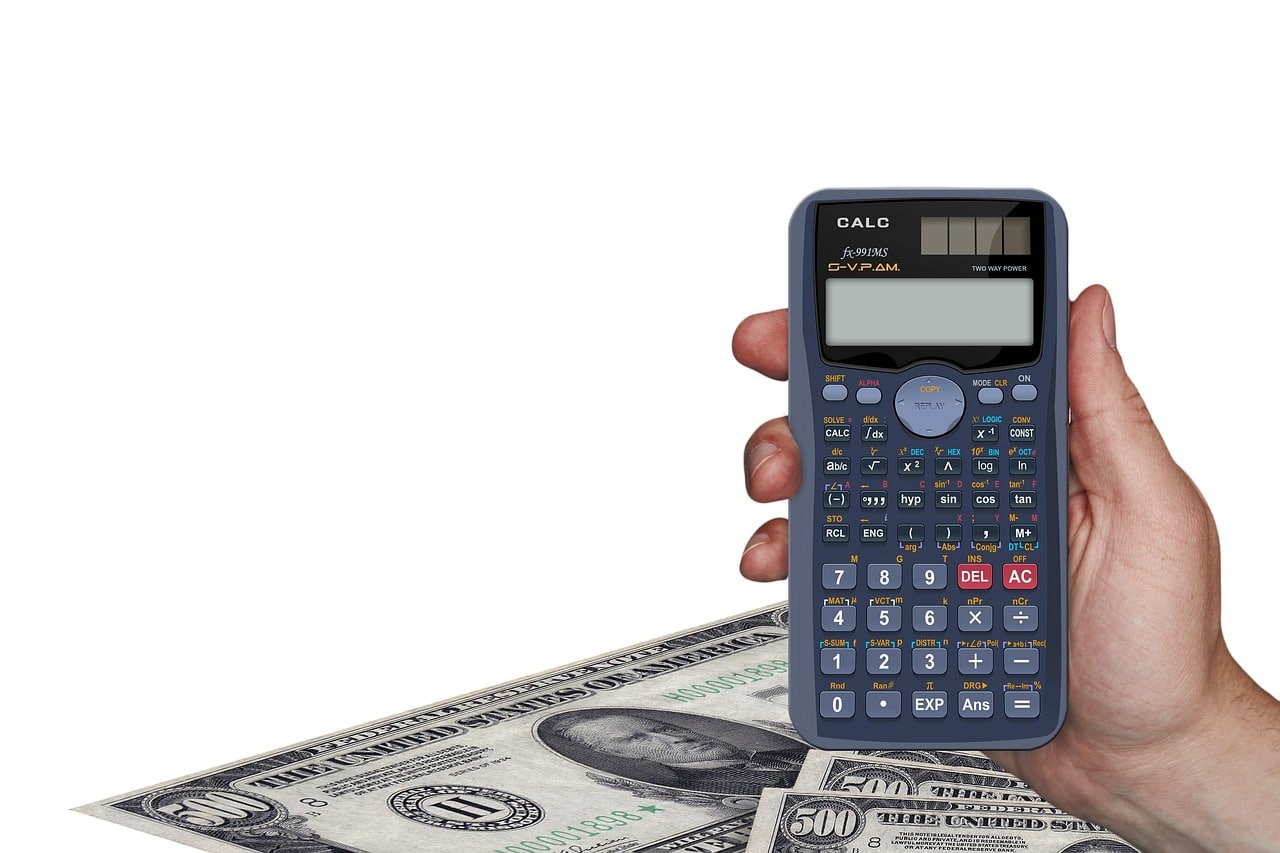How to Make Saving Money Feel Easier

Saving money can feel frustrating when there’s always something competing for your attention. It’s not just about how much you earn. It’s about the daily decisions that add up and the unexpected costs that throw your plans off. You might set a goal and feel excited at first, but sticking with it can start to feel tiring.
There is also the pressure to save “the right way,” which can make the process feel even more overwhelming. If saving does not come naturally, or if past efforts didn’t stick, it’s easy to assume it just isn’t for you.
Learning how to make saving money feel easier often comes down to finding an approach that fits your pace, priorities, and everyday life.
Key Takeaways
- Small, consistent actions often lead to stronger savings habits than drastic changes.
- Mindset shifts can reduce emotional pressure and help saving feel more natural.
- Automating savings through tools and apps can remove decision fatigue.
- Setting personal, meaningful goals makes saving more motivating.
- Tracking expenses can reveal easy opportunities to save without cutting essentials.
- Using rewards and visual progress boosts consistency and engagement.
- Saving becomes easier when built into daily routines rather than treated as an afterthought.
Why Does Saving Money Feel So Hard Sometimes?
The challenge to save money often isn’t just about income or discipline. It’s about the mental, emotional, and practical blocks that make saving harder than it needs to be. Here are some of the most common reasons saving feels difficult:
- Limited financial room to start with: Around 62% of U.S. adults live paycheck to paycheck. When most of your income goes toward essentials like rent, groceries, and bills, there isn’t much left to save. This makes saving feel like an extra task rather than part of the routine.
- Emotional blocks tied to money: Saving can trigger emotions like guilt, anxiety, or even frustration. For some, it brings back past financial stress. For others, it feels like cutting back on things that make life enjoyable. These emotional responses can subtly influence how consistently you save.
- Rigid plans that don’t leave room for real life: Strict savings plans might look effective in theory, but they often fail to account for the ups and downs of everyday spending. If your plan doesn’t adapt, it can lead to burnout or cause you to abandon it altogether after a few setbacks.
- Overwhelm from too many tools or strategies: With so many budgeting apps, financial advice columns, and savings hacks online, it’s easy to get overwhelmed. Deciding where to start or which approach to follow can delay action or lead to giving up halfway through.
- Lack of immediate rewards: Saving usually means waiting for a future benefit. Meanwhile, spending offers an instant reward, whether it’s a nice meal, a small gift, or an experience. Without short-term wins or visible progress, saving can feel slow and unrewarding.
- Inconsistent habits that don’t build momentum: Saving becomes easier when it’s part of a steady routine. Without that, it can feel random or forced. Skipping one or two planned savings weeks can break the rhythm and make it harder to stay committed.
7 Simple Ways to Make Saving Money Easier
Saving often feels difficult because it can lack structure, reward, or a clear starting point. But when small habits are applied consistently, they can lead to lasting change.
1. Start Small with Automatic Transfers
Saving doesn’t always need a large upfront commitment. Automatic transfers remove the decision-making from the process and facilitate steady progress. Even transferring a small amount each week builds momentum. For example, saving $10 every Friday adds up to over $500 a year without needing constant attention.
More than 1 in 5 Americans have no emergency savings, often because saving is treated as a leftover task. Starting with a small automated amount helps form a habit and reduces the risk of skipping it entirely.
2. Set a Fun Goal You Are Excited About
Saving becomes easier when there is something to look forward to. A goal adds context, and that context brings energy to the process. Whether it’s a new phone, a trip with friends, or a home improvement project, saving for something personal creates emotional buy-in.
Abstract goals like “save more” often fade, but something visible and enjoyable builds a stronger connection. Writing the goal down or visualizing the outcome makes it easier to stay focused when the excitement wears off. This turns saving from a task into a path toward something meaningful.
3. Track Spending to Spot Easy Wins
Many people think they have no room to save, but often, the issue is not knowing where the money goes. Tracking expenses, even loosely, can reveal hidden spending patterns. Americans spend an average of $219 per month on subscriptions, many of which are unused.
Identifying one or two areas where spending can be reduced, like cutting back on takeout or canceling overlapping services, can free up cash without sacrificing essentials. These small wins give immediate breathing room and make space for consistent saving.
4. Use Cash-Back Apps and Browser Extensions
Cash-back tools allow people to save without changing where or how they shop. Apps like Rakuten and Ibotta, as well as browser extensions like Honey, offer discounts or provide cash back on everyday purchases. These savings often go unnoticed but can add up across the year.
For example, a household that uses cash back for groceries and online shopping might reclaim $15 to $30 per month. When funneled into a savings account, that becomes a painless way to grow funds over time. The process is passive and works well alongside other saving habits.
5. Create No-Spend Days with Low-Effort
No-spend challenges, whether for a day or a month, encourage mindful choices without the need for strict budgeting. Skipping non-essential purchases once or twice a week can reduce casual spending while highlighting which expenses truly matter. These days, you don’t need to feel restricted.
Planning ahead with meals or free activities helps maintain comfort without reaching for the wallet. Over time, these days train the brain to pause before impulse purchases. The cumulative effect can lead to noticeable monthly savings without requiring any major lifestyle shift.
6. Split Income Into “Save First, Spend Second” Buckets
The “save first” approach flips the common habit of saving whatever is left at the end of the month. Allocating a portion of income for savings right away builds discipline and structure. Households that separate income into spending and saving categories are more likely to meet long-term goals.
Even setting aside 5% to 10% automatically creates consistency. The remaining balance can then be used freely, which often reduces guilt around spending and supports a more balanced budget.
7. Reward Yourself for Sticking to Your Plan
Saving is more likely to become a lasting habit when it feels good. Introducing small, low-cost rewards for reaching savings goals can help build positive reinforcement. These rewards don’t need to involve spending. They might include a free day off from chores, a favorite homemade meal, or quality time with friends.
For larger goals, setting visual checkpoints along the way can make the process more engaging. Individuals who track their progress and celebrate milestones are more likely to remain committed to their financial goals.
Mindset Shifts That Make Saving Money Feel Natural
A mindset shift is a change in how something is approached or understood. When it comes to saving money, it means moving away from the idea that saving is difficult, restrictive, or something that requires perfection. Instead, it becomes something that fits naturally into daily life.
- Think of saving as self-care, not restriction: A well-funded savings account can reduce stress, lower anxiety about the future, and create space for opportunities. Money is one of the top sources of stress for adults in the United States. Reframing saving as something that protects your well-being can make the habit feel supportive instead of limiting.
- Shift focus from perfection to progress: Progress builds through consistency, not perfection. Even saving small amounts regularly has value. People with even a little bit of emergency savings are less likely to miss housing or utility payments after a financial shock. Small steps still count and help build financial resilience.
- Replace short-term thinking with long-term perspective: Shifting the focus to what saving can create over time helps build patience and clarity. Whether it’s reduced debt, greater freedom, or peace of mind, seeing the bigger picture makes everyday decisions feel more purposeful. A long-term view reduces the temptation to spend impulsively.
- Treat saving as a routine, not a reaction: Turning saving into a normal routine makes it feel automatic rather than emotional. Just like brushing teeth or preparing meals, saving can become a steady part of life. When it stops being a reaction to stress, it becomes something that supports your stability every day.
- Celebrate effort, not just outcomes: Financial goals often take time, and waiting to feel proud until a number is reached can make the journey feel long. Recognizing effort helps build momentum. Acknowledging a month of consistency, a reduced expense, or a new habit can all reinforce the behavior.
Use Tools That Make Saving Automatic
Saving tends to feel harder when it relies on willpower or perfect timing. The more decisions that need to be made, the easier it becomes to skip or delay the habit. Automated tools reduce that friction. They handle the process in the background, helping you save consistently without needing to think about it every time.
Round-up Savings Apps
Round-up features have become one of the smartest ways to save without effort. These tools work by rounding purchases to the nearest dollar and moving the difference into a savings account. For example, if a coffee costs $2.40, the remaining $0.60 goes toward savings.
Apps like Acorns, Qapital, and Chime offer this feature, and it works well for individuals who prefer making small, frequent contributions over larger ones. Users enrolled in its round-up savings program save a few hundred dollars every year simply by letting spare change collected in the background. These amounts may seem small on a day-to-day basis, but they often lead to significant savings over time.
Automatic Transfers to Savings Accounts
Setting up regular transfers to a savings account can help build a predictable rhythm. Many people find it easier to stick with a savings habit when the process occurs automatically. Banks and credit unions offer scheduled transfers at a frequency that suits you best.
These transfers take the choice out of the equation, which can help reduce decision fatigue. Over time, regular contributions form a habit, even if the amounts start small. Automate your savings to create a dependable foundation for emergency funds, goal-focused saving, or future financial planning.
Budgeting Apps with Built-in Savings Features
Apps like YNAB (You Need A Budget), Mint, and PocketGuard combine budgeting with savings goals. These platforms enable users to assign categories, track progress, and automate the distribution of extra funds. For instance, a user might set a monthly goal to save $100 for travel, and the app will monitor and guide spending in real time to support that goal.
These tools connect everyday choices to long-term outcomes. The result is a stronger link between short-term behavior and long-term benefits, which helps build a more thoughtful approach to saving.
Bank Accounts with Built-in Savings Rules
Some financial institutions now include automatic saving rules directly within checking accounts. These might include features like saving a percentage of each deposit, rounding up card purchases, or dividing funds into digital envelopes. These tools remove the need to use third-party apps and often work seamlessly across accounts.
For example, if 5% of every deposit is automatically sent to savings, the habit becomes part of every payday without requiring any extra steps. Over time, this structure builds stability and encourages consistent contributions, even when spending varies from month to month.
Spending Alerts and Summaries Keep Saving Goals on Track
Automated tools that send real-time spending alerts, low-balance warnings, or monthly summaries can help build awareness and accountability. Most people who track their spending report feeling more in control of their finances.
These notifications don’t just help people avoid overspending. They also reinforce financial awareness, which supports better saving habits. Seeing where the money goes makes it easier to adjust and redirect small amounts toward savings goals.
Conclusion
Saving money often feels difficult, not because of a lack of effort but because of the pressure and unpredictability that come with it. When habits feel restrictive, or progress feels slow, it becomes easy to lose momentum. But saving can feel lighter with the right mix of tools, routines, and mindset shifts.
The process becomes more manageable when it works with your daily life rather than against it. Over time, saving begins to feel less like a task and more like a steady part of life.
For those looking to add a little extra to their savings without adjusting their entire routine, paid research opportunities through platforms like Focus Group Panel can be a helpful option. By sharing your feedback in surveys, product tests, or clinical studies, you can earn additional income while making your voice count.
FAQ
Can Saving Money Help Reduce Financial Anxiety?
Yes. Even small amounts set aside regularly can create a sense of control and reduce the stress of unexpected expenses. Building a cushion, no matter the size, can provide peace of mind over time.
What Is a Realistic Amount to Save Each Month on a Low Income?
The amount varies for everyone. Even saving $10 to $20 a month can make a difference when done consistently. The focus is less on how much and more on creating a habit that feels sustainable.
How Can I Stay Motivated to Save for Long-Term Goals?
Breaking long-term goals into smaller milestones can help maintain motivation and keep you on track. Tracking progress visually or setting check-in points makes the goal feel more reachable and keeps you engaged along the way.
How Do I Recover If I Dip Into My Savings Unexpectedly?
It helps to revisit the savings goal and adjust the timeline if needed. Restarting small and staying consistent can rebuild confidence without adding extra pressure.





